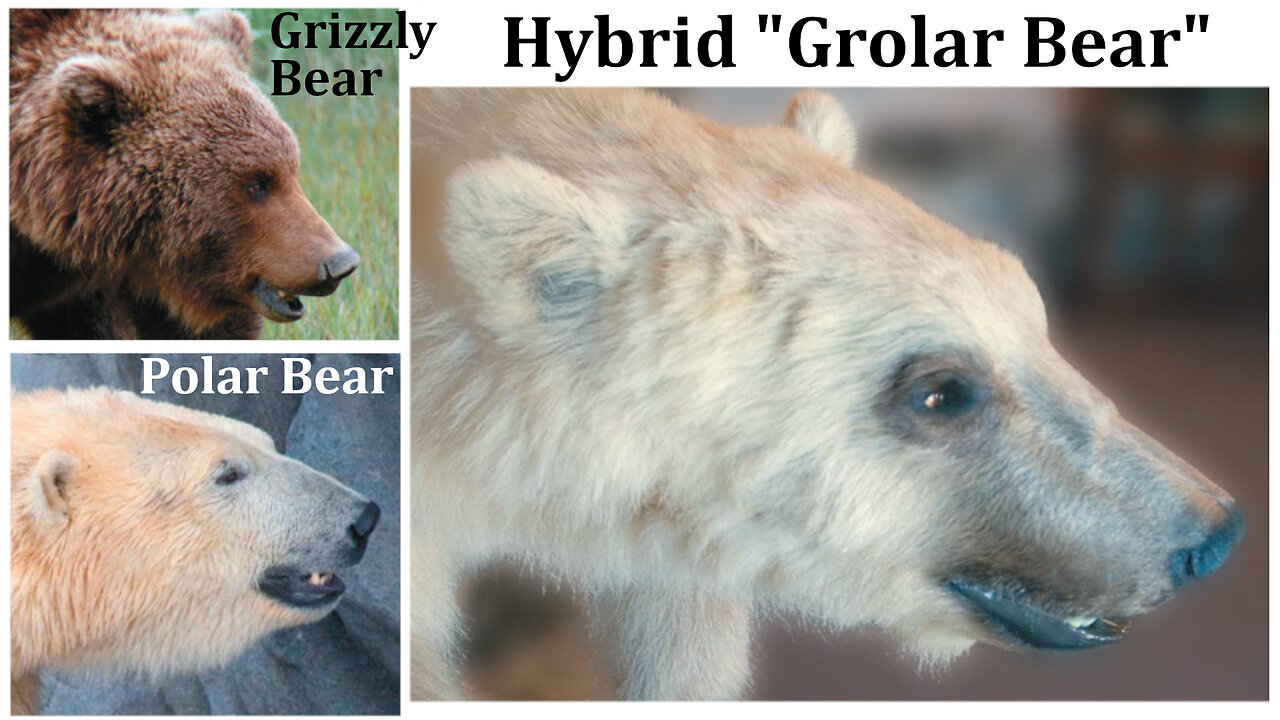Premium Only Content

Evolutionary Biology: Speciation, Reproductive Isolation, and Hybrids
In this video, I explain speciation, the process by which one lineage splits into two independent lineages that evolve separately. For speciation to occur, reproductive isolation is required, which can result from physical barriers (like geographic separation) or genetic incompatibilities. Hybrids are offspring of two different species, such as a mule or hinny, which are crosses between a horse and a donkey. Hybrids are often selected against, either due to reduced viability or infertility (mules and hinnies typically have 63 chromosomes—a mix of 64 from the horse and 62 from the donkey—leading to infertility in most cases). When reproductive isolation between two closely related species is incomplete, a hybrid zone can form. Over time, this zone may disappear, the two species may merge, or the hybrid zone can remain stable.
Time stamps:
- Speciation splits one lineage into two independent lineages: 0:00
- Bateson-Dobzhansky-Muller model for incompatibilities between genes: 3:04
- Hybrid incompatibility occurs in most hybrids of different species and can't reproduce: 5:12
- Figure showing mutations occuring in isolated populations: 7:26
- Comparison of allopatric, peripatric, parapatric, and sympatric speciation: 11:16
- Allopatric speciation: physical barrier.
- Peripatric speciation: much smaller isolated peripheral population: 13:00
- Parapatric speciation: two subpopulations evolve reproductive isolation while continuing to exchange genes: 13:54
- Sympatric speciation: genetic polymorphism or 2+ different morphs or forms in the population: 14:15
- Pre-zygotic isolation occurs before fertilization or mating: 15:17
- Post-zygotic isolation occurs after fertilization or mating and can select against hybridization: 18:52
- Mules and hinnies have 63 chromosomes, a mixture of 64 from horse and 62 from donkey: 19:32
- Mule = male donkey (jack) + female horse (mare)
- Hinnie = male horse (stallion) + female donkey (jenny)
- Hybrid zone is where interbreeding species or diverged lineages meet and cross-fertilize: 21:15
- Possible outcomes of hybrid zones: reinforcement, fusion, or stability: 24:41
Full video below:
- Full video and playlist: https://www.youtube.com/playlist?list=PLai3U8-WIK0FYO6bxFbBAtVJ9sDOJnH72
- Notes: https://peakd.com/hive-128780/@mes/messcience-3-overview-of-biology
- MES Science playlist: https://www.youtube.com/playlist?list=PLai3U8-WIK0FjJpwnxwdrOR7L8Ul8VZoZ .
------------------------------------------------------
Become a MES Super Fan! https://www.youtube.com/channel/UCUUBq1GPBvvGNz7dpgO14Ow/join
DONATE! ʕ •ᴥ•ʔ https://mes.fm/donate
SUBSCRIBE via EMAIL: https://mes.fm/subscribe
MES Links: https://mes.fm/links
MES Truth: https://mes.fm/truth
Official Website: https://MES.fm
Hive: https://peakd.com/@mes
Email me: contact@mes.fm
Free Calculators: https://mes.fm/calculators
BMI Calculator: https://bmicalculator.mes.fm
Grade Calculator: https://gradecalculator.mes.fm
Mortgage Calculator: https://mortgagecalculator.mes.fm
Percentage Calculator: https://percentagecalculator.mes.fm
Free Online Tools: https://mes.fm/tools
iPhone and Android Apps: https://mes.fm/mobile-apps
-
 2:15:38
2:15:38
Math Easy Solutions
5 days ago $0.03 earnedMES Math Q/A 6: What Lab Equipment is Needed for the Hutchison Effect?
1501 -

FreshandFit
7 hours agoAfter Hours w/ Girls
86.6K61 -
 2:33:58
2:33:58
TimcastIRL
10 hours agoDan Bongino ACCEPTS Deputy FBI Director, SECRET NSA CHATS EXPOSED w/Joey Mannarino | Timcast IRL
154K86 -
 1:09:33
1:09:33
Glenn Greenwald
14 hours agoMichael Tracey Reports from CPAC: Exclusive Interviews with Liz Truss, Steve Bannon & More | SYSTEM UPDATE #412
101K87 -
 56:02
56:02
Sarah Westall
11 hours agoBiohacking & Peptides: Weight loss, Anti-Aging & Performance – Myth vs Reality w/ Dr. Diane Kazer
48.9K14 -
 11:22
11:22
Bearing
21 hours ago"Anxious & Confused" Federal Workers FREAK OUT Over DOGE Efficiency Email 💥
72.9K74 -
 1:31:20
1:31:20
Flyover Conservatives
1 day agoUS STOCK MARKET: Sinking Ship - Dr. Kirk Elliott; How I Fought Back Against Woke Schools & Stopped Gender Bathrooms - Stacy Washington | FOC Show
72.8K4 -
 1:08:09
1:08:09
Donald Trump Jr.
15 hours agoFBI Dream Team, Plus Taking Your Questions Live! | Triggered Ep.219
213K284 -
 7:32:37
7:32:37
Akademiks
15 hours agoDrake and PartyNextDoor '$$$4U' Album Sells 250K first week. BIG AK IS BACK.
128K18 -
 3:12:08
3:12:08
MyronGainesX
14 hours ago $32.98 earnedDan Bongino Named FBI Deputy Director, Trump Meets Macron, And More!
103K32